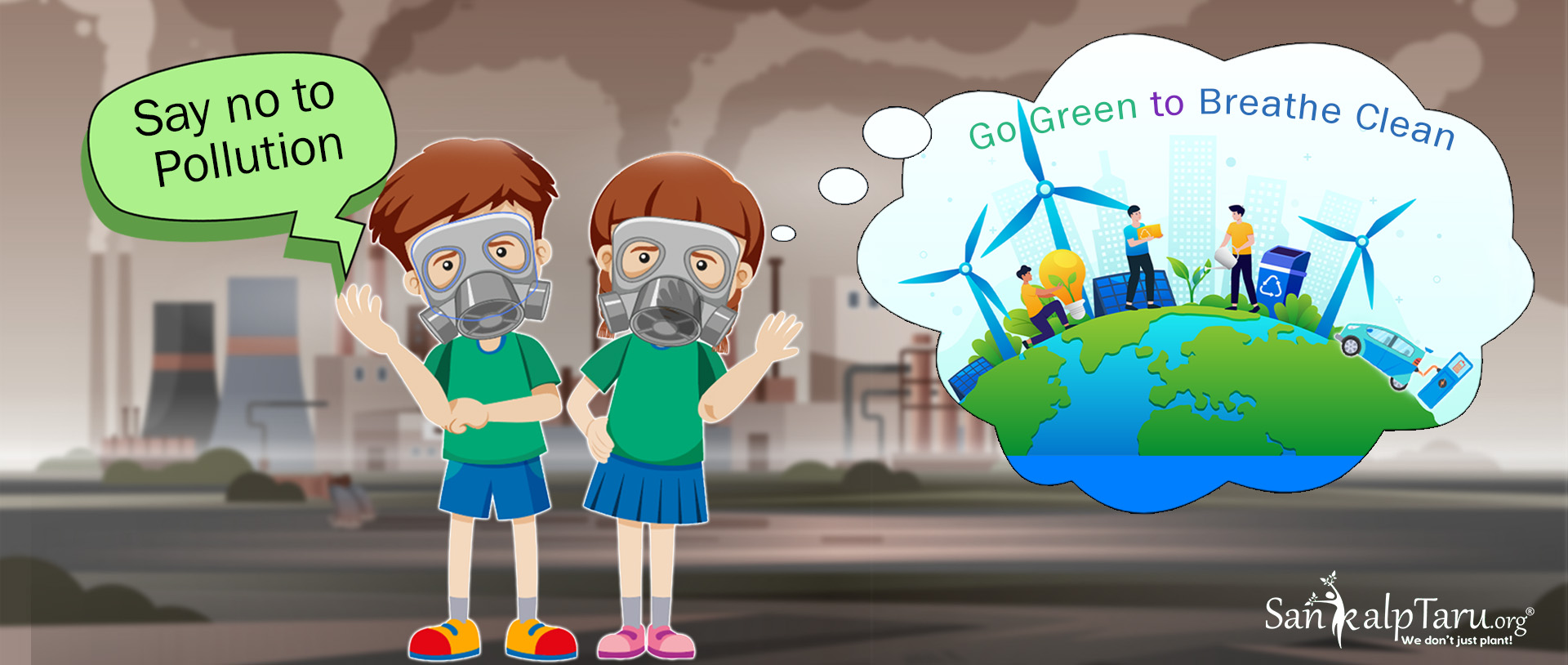A few decades ago, the air was free from pollution and contaminants and was much cleaner than it is today. Undoubtedly, air pollution is one of the most pressing environmental issues that the world has to face today. The presence of hazardous and toxic chemicals and gasses in the air is referred to as air pollution.
Volcanic eruptions and forest fires were the earliest forms of air pollution that we are aware of. But with the Industrial Revolution, it became a lot more prevalent. The pace of air pollution is worrying, and as a result, it negatively impacts people’s quality of life.
Emissions from automobiles, burning plastic, smoke from fires, volcanoes, industries, and mining are significant sources of air pollution. The use of refrigerators and coolers, which emit hydrofluorocarbons into the environment, is another source of air pollution.

Climate changes and weather variations occur as a result of global warming due to these air pollutants, which harms the ecosystem. Most life forms are threatened by the irrevocable harm that air pollution does to the environment. The industrial revolution and technological advancements have been the main causes of air pollution. Additionally, the number of vehicles burning fossil fuels has grown dramatically over the past several decades, which has increased the amount of air pollutants. As a result, the quality of the air we breathe has been deteriorating over time. People’s health is adversely affected by air pollution in several ways. Numerous skin and respiratory conditions affect humans as a result of it. Many illnesses, including bronchitis and asthma, are brought on by air pollution.
Air quality has improved globally as a result of the recent coronavirus outbreak. Lockdowns have caused factories and roadways to close, lowering pollution. The Centre for Science and Environment (CSE) reports that during the pandemic-induced lockdown period, air pollution in Delhi, Mumbai, Kolkata, Chennai, Hyderabad, and Bengaluru fell by an astounding 45–88%. With more cars on the road following the relaxation of lockdown, air pollution levels have started skyrocketing once again.
Rapid population growth is a significant contributor to air pollution. A lot of air pollution and heavy haze have recently been present in Delhi. Air quality has been significantly degraded as a result of the rising levels of air pollution, which have had major implications. Stubble burning has long been a significant source of air pollution in northern India, despite several attempts to halt it. After grains like rice, wheat, and other crops have been harvested, the straw stubble is purposely set ablaze. Stubble burning has been contributing to a lot of air pollution in Delhi. Pollution levels in Delhi increased during Diwali by almost 100% compared to the days before.
The World Health Organization (WHO) estimates that at least nine out of ten people worldwide reside in areas with unhealthy air.
Despite the fact that air pollution has reached a dangerous threshold, there are still ways to reduce the amount of air pollutants in the atmosphere.
Here are a few strategies for lowering air pollution.
- By growing a larger population of trees, which clean and filter the air, we may increase the quality of the air we breathe.
- The government should implement strict regulations for industries regarding emission standards. As a result, we can reduce the pollutants that manufacturers produce.
- We must adopt the use of green fuels like biogas, compressed natural gas, liquefied petroleum gas (LPG), and other eco-friendly fuels. Consequently, we may cut back on the hazardous poisonous gasses.
- Our transportation demands are responsible for 30% of all carbon dioxide gas emissions. Instead of driving our own cars or other vehicles, we can use public transportation.
- Driving with zero emissions is possible with electric vehicles. Compared to purchasing liquid gasoline for your travel needs, charging an electric car is less expensive.
- Due to its sustainability, solar energy plays a crucial role in reducing greenhouse gas emissions.
- Whenever you have the option and access, buy recyclable things. Utilizing existing resources lessens the need to create new trash. Burning plastic releases a number of hazardous gasses, endangering the atmosphere and posing a major health risk to anyone inhaling them. Reusing products, like water bottles, helps cut down on air pollution brought on by burning waste at landfills.
Through their leaves, trees are able to purify the air and absorb hazardous airborne particles, gaseous pollutants, and toxins including ammonia, nitrogen oxides, and sulfur dioxide. This leads to a healthier and cleaner environment with improved air quality. Additionally, trees absorb the dangerous carbon dioxide in our atmosphere. A mature tree may take up around 48 pounds of CO2 annually. In turn, the tree releases enough oxygen to support two people.
It is our duty to keep this environment tidy and clean. We may achieve this by taking good care of our environment and abstaining from actions that contribute to air pollution. Increase your tree planting efforts and drive less frequently. Cut back on the usage of plastic items and the amount of toxic gas emitted into the environment.
Let’s take an oath to make planet Earth a cleaner, greener and a better place to live!
To learn more, read here: https://sankalptaru.org/trees-for-air-pollution/

